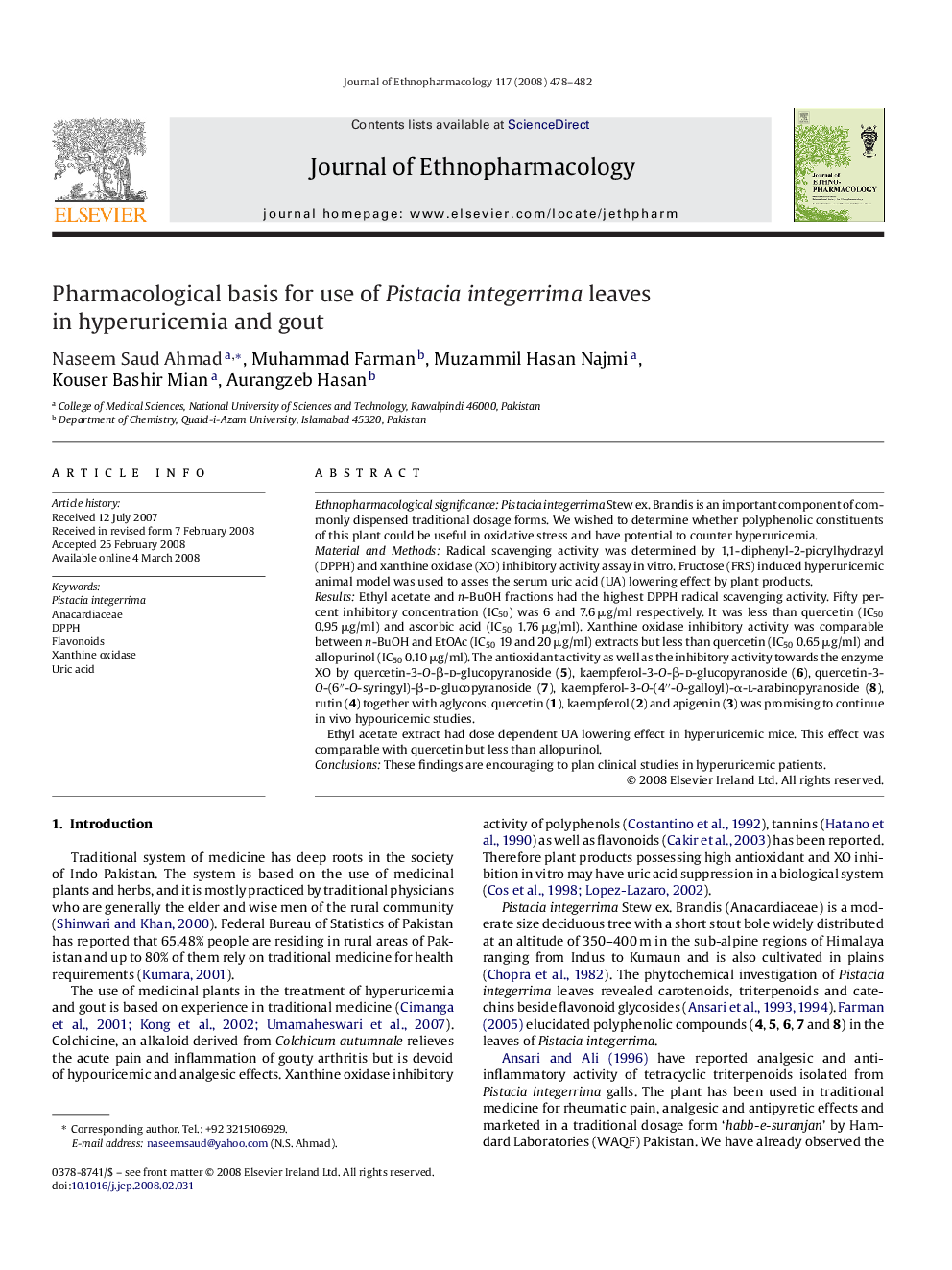| Article ID | Journal | Published Year | Pages | File Type |
|---|---|---|---|---|
| 2547045 | Journal of Ethnopharmacology | 2008 | 5 Pages |
Ethnopharmacological significancePistacia integerrima Stew ex. Brandis is an important component of commonly dispensed traditional dosage forms. We wished to determine whether polyphenolic constituents of this plant could be useful in oxidative stress and have potential to counter hyperuricemia.Material and MethodsRadical scavenging activity was determined by 1,1-diphenyl-2-picrylhydrazyl (DPPH) and xanthine oxidase (XO) inhibitory activity assay in vitro. Fructose (FRS) induced hyperuricemic animal model was used to asses the serum uric acid (UA) lowering effect by plant products.ResultsEthyl acetate and n-BuOH fractions had the highest DPPH radical scavenging activity. Fifty percent inhibitory concentration (IC50) was 6 and 7.6 μg/ml respectively. It was less than quercetin (IC50 0.95 μg/ml) and ascorbic acid (IC50 1.76 μg/ml). Xanthine oxidase inhibitory activity was comparable between n-BuOH and EtOAc (IC50 19 and 20 μg/ml) extracts but less than quercetin (IC50 0.65 μg/ml) and allopurinol (IC50 0.10 μg/ml). The antioxidant activity as well as the inhibitory activity towards the enzyme XO by quercetin-3-O-β-d-glucopyranoside (5), kaempferol-3-O-β-d-glucopyranoside (6), quercetin-3-O-(6″-O-syringyl)-β-d-glucopyranoside (7), kaempferol-3-O-(4″-O-galloyl)-α-l-arabinopyranoside (8), rutin (4) together with aglycons, quercetin (1), kaempferol (2) and apigenin (3) was promising to continue in vivo hypouricemic studies.Ethyl acetate extract had dose dependent UA lowering effect in hyperuricemic mice. This effect was comparable with quercetin but less than allopurinol.ConclusionsThese findings are encouraging to plan clinical studies in hyperuricemic patients.
